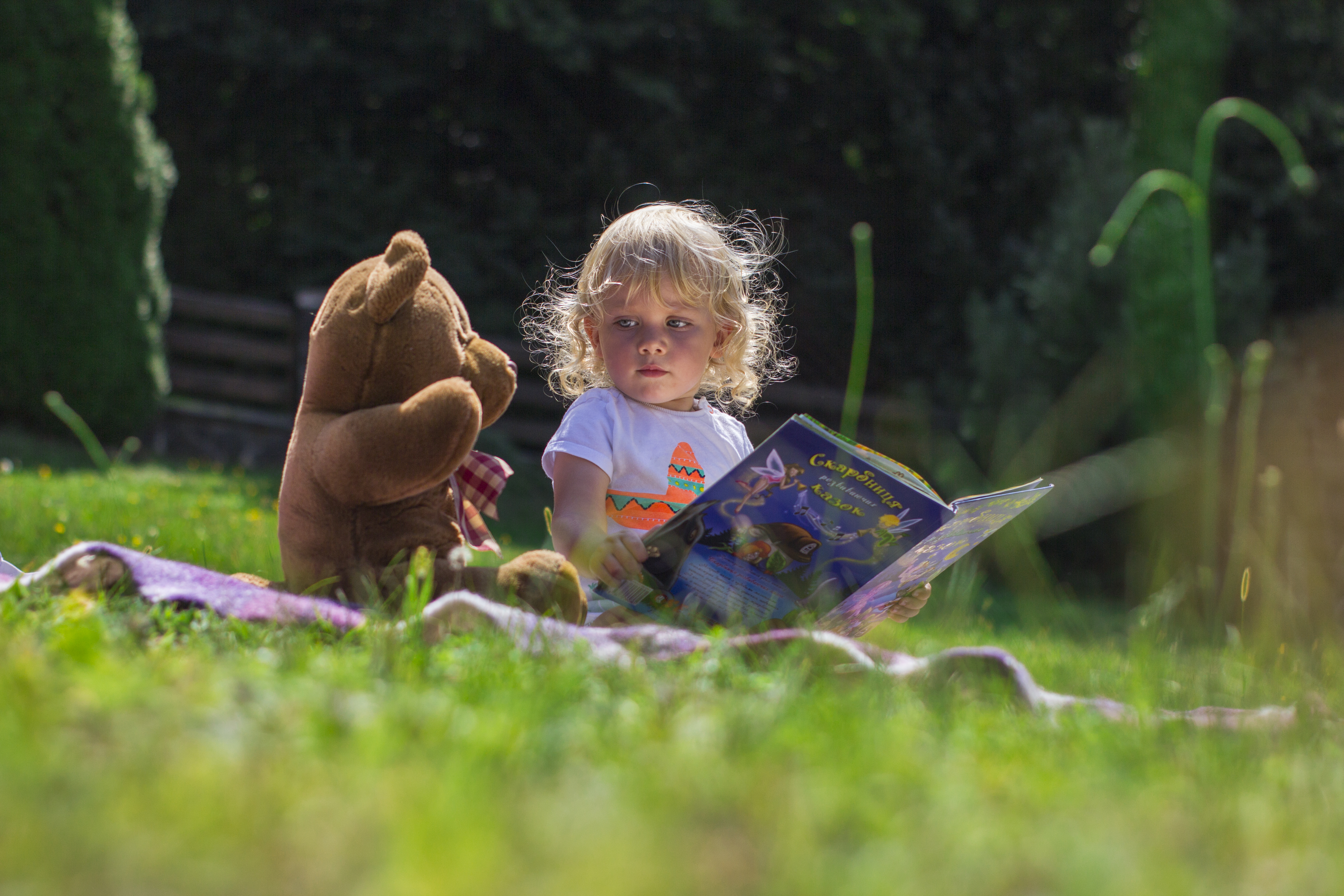Parents have a very important role helping their children to acquire languages at home. In the previous article, we saw how addressing the child in a simplified language in one’s own mother tongue was key. Here, we will discuss some tools that can be used to improve a child’s learning process.
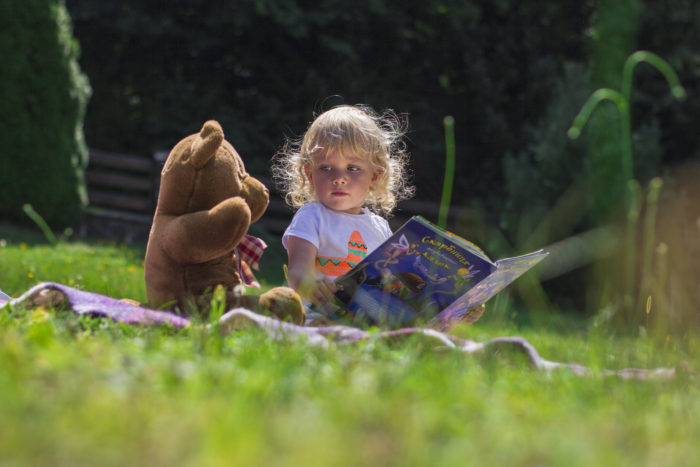
Confidence and reassurance
Children start using words to communicate when they are about 12 months old. They babble at first, waiting for a response. They look into the eyes of their mothers or fathers while doing so, as if they were having a conversation. While toddlers a lot of things; they give instructions, they describe what they are doing, they even ask questions. The language is for most, unintelligible. More like cute little drunks. But this is far from reality because most parents will tell you their baby’s “words” make sense to them.
In fact “making sense” of the baby’s babbles is what helps them feel confident enough to learn the language. Nod to them, reassuringly, say yes or use words like “wow, really? All that?” and repeat the words they are trying to say correctly. This encourages their thirst to learn and nudges them to continue with their efforts. They in turn, register the right pronunciation of the word, and over time learn to use it in simple sentences. Each parent should do this in their own language.
What we are communicating when we respond to their babbling or hold these drunken conversations is: “Yes, you can do it. You can learn this one language now and soon we will be able to communicate using it.” This confidence building gesture should be a parent’s first and foremost contribution to their child’s language learning process.
A Surround sound system
A mother of two explaining how she helped her children embrace both Swiss German and Spanish, said, “I went for a surround system.” Whatever she meant, it seemed to have worked because at the age of 6 and 11, they were completely proficient in both languages.
The idea is that once the stage of babbling has passed, we observe toddlers using words in a more precise way. They recognize the way each parent speaks to them: parent A speaks to me in this one set of words and sounds, while parent B uses another set of words and sounds. This way, by the age of 18 to 24 months they are perfectly capable of addressing each parent in his/her language.
Coordination between the parents is very important. The surround system works when parent A gives an instruction or explanation in one language, and very soon after, parent B repeats the instruction or explanation in the other language of the house. For example, parent A gives the instruction, “Mia, we will go to the bathroom and wash our hands”. Having heard the instruction, parent B will assert in Spanish, “si Mía, ve con mamá al baño a lavarte las manos.”
This, of course requires that both parents know a little bit of each other´s language. Very often, only one party learns the mother tongue of the other person but it is becoming evident that communication, in general improves, the more languages used within the household. If you have not already done so, consider learning the language your partner speaks.
Socializing your Baby
Over time, children grow up and start socializing. As toddlers their interaction is more non-verbal through play, but at the age of two and a half to three years, they start interacting verbally.
There are five possible scenarios where each parent speaks his/her own language to the child, with some difference in the language spoken at home, and that of the social context.
The following chart explains the five cases of bi/multilingual language acquisition, including factors like the language spoken at home, the input from each parent, and the context. 2 and 3 represent the languages of each parent, while 1 is the “bridge” they use at home; and 4 is another foreign language.
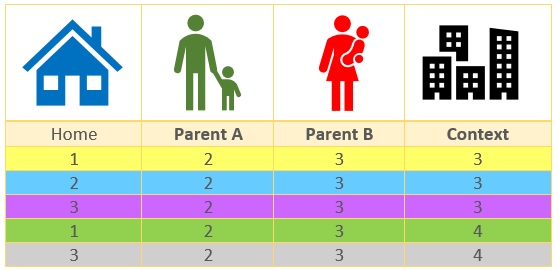
The above figure gives you some basic tools to deal with your specific situation.
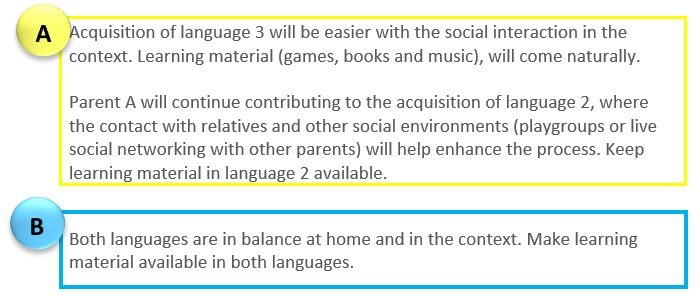
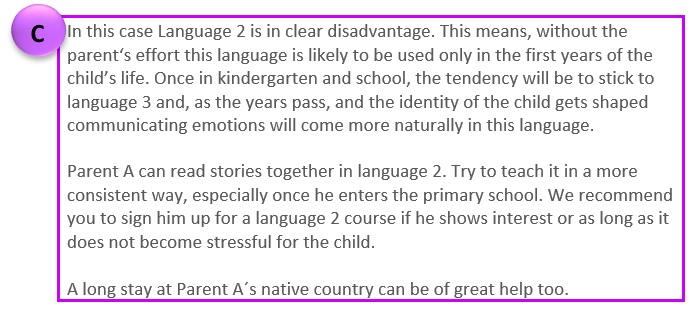
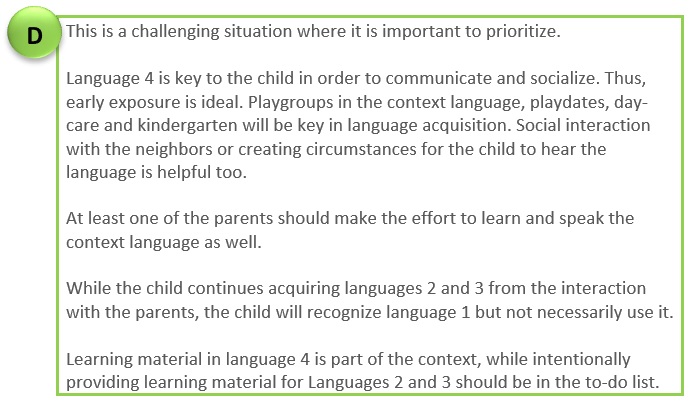
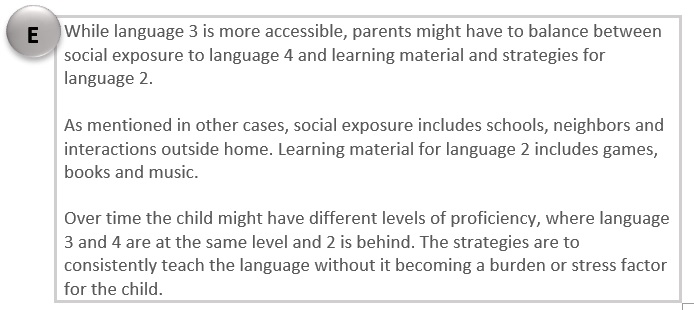
We have given you some material to evaluate the language acquisition of your child. It is up to the parents to allow and facilitate the acquisition of multiple languages and the benefits of knowing multiple languages are well documented. However, there are other factors that we should look at, like how context influences the language acquisition and how to create a good language-learning environment at home. These are the topics we will see in the next article.
Please share your experiences with others in the comments section below.
Article by Luisa Trujillo @lutmadev

